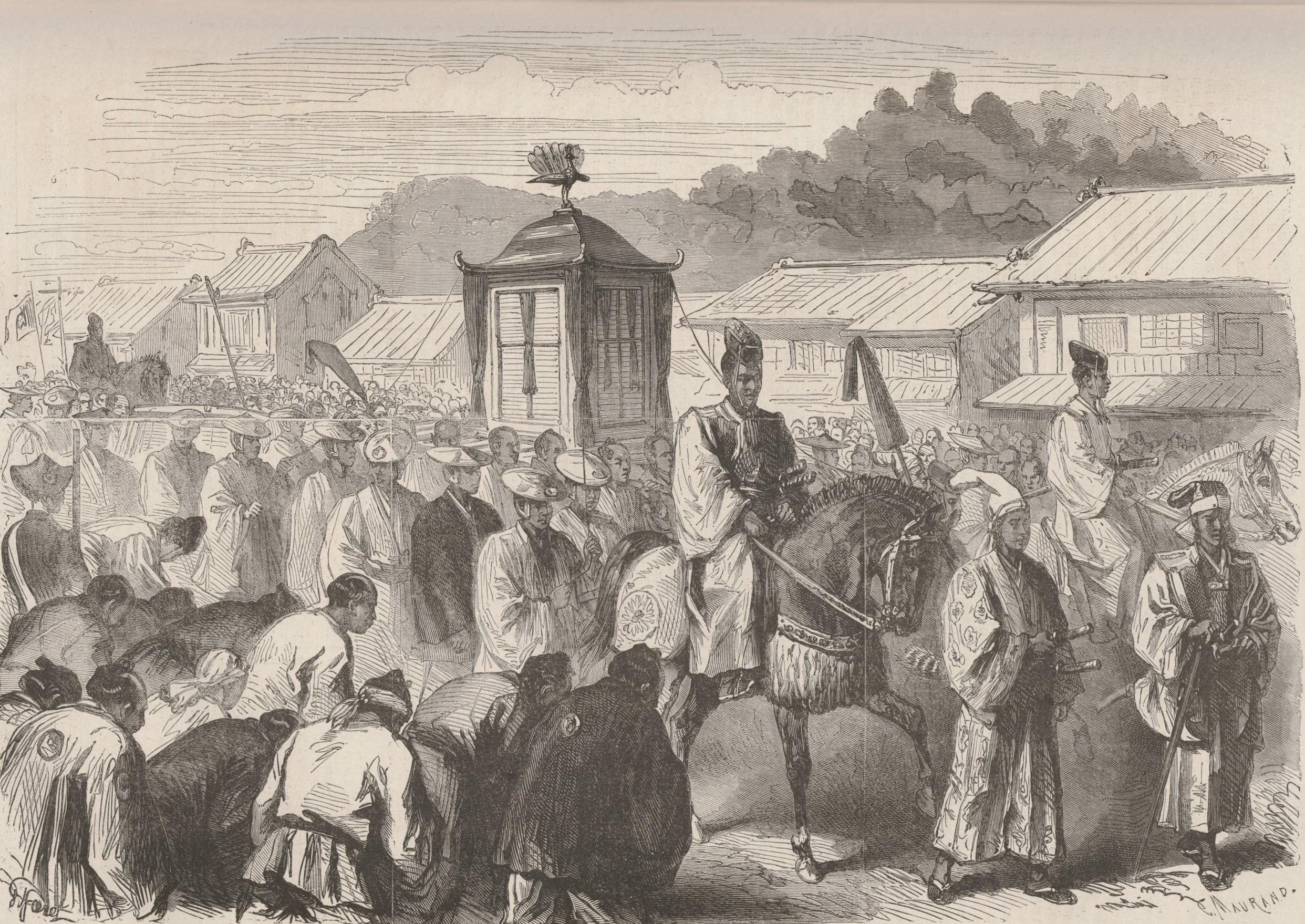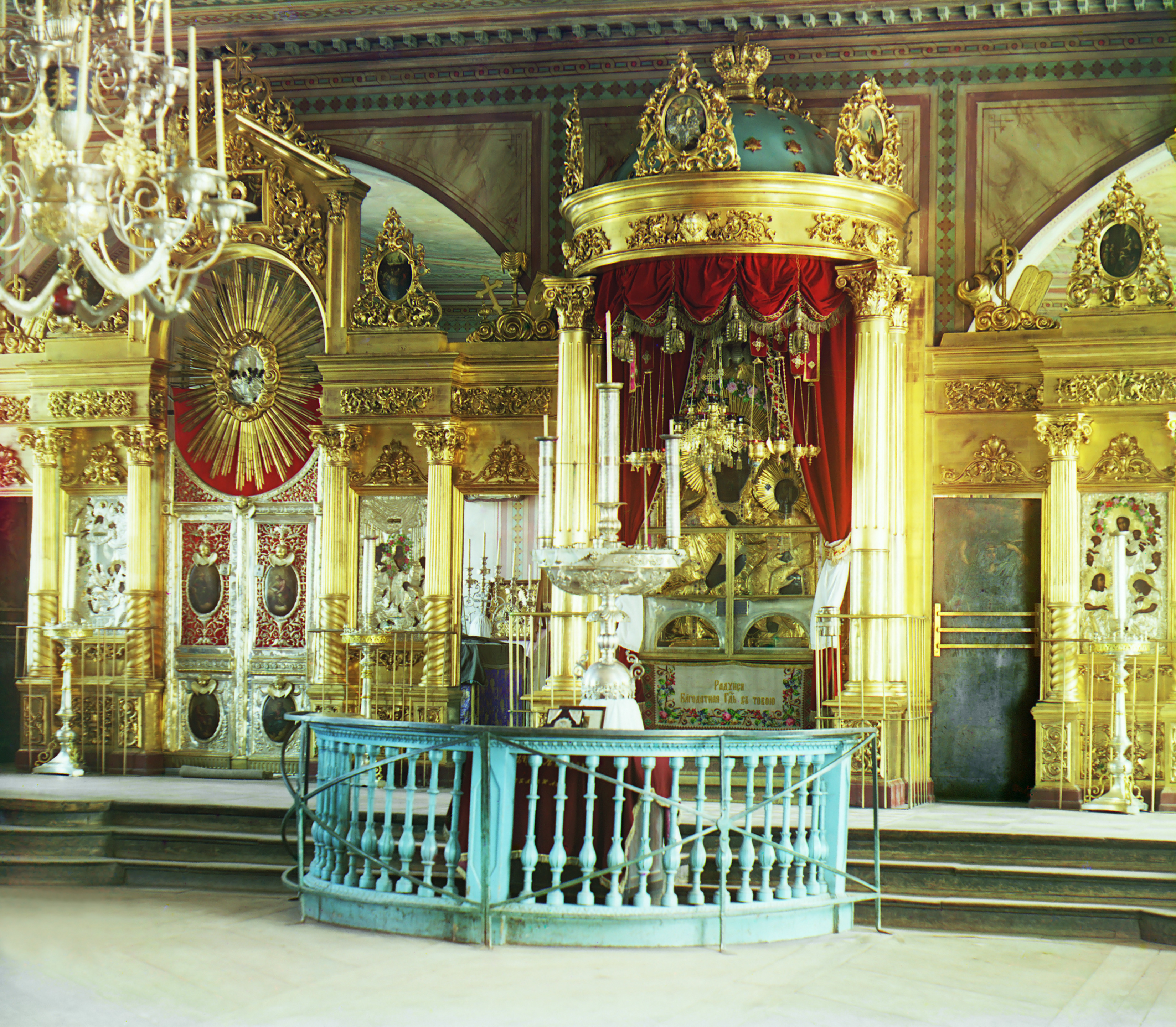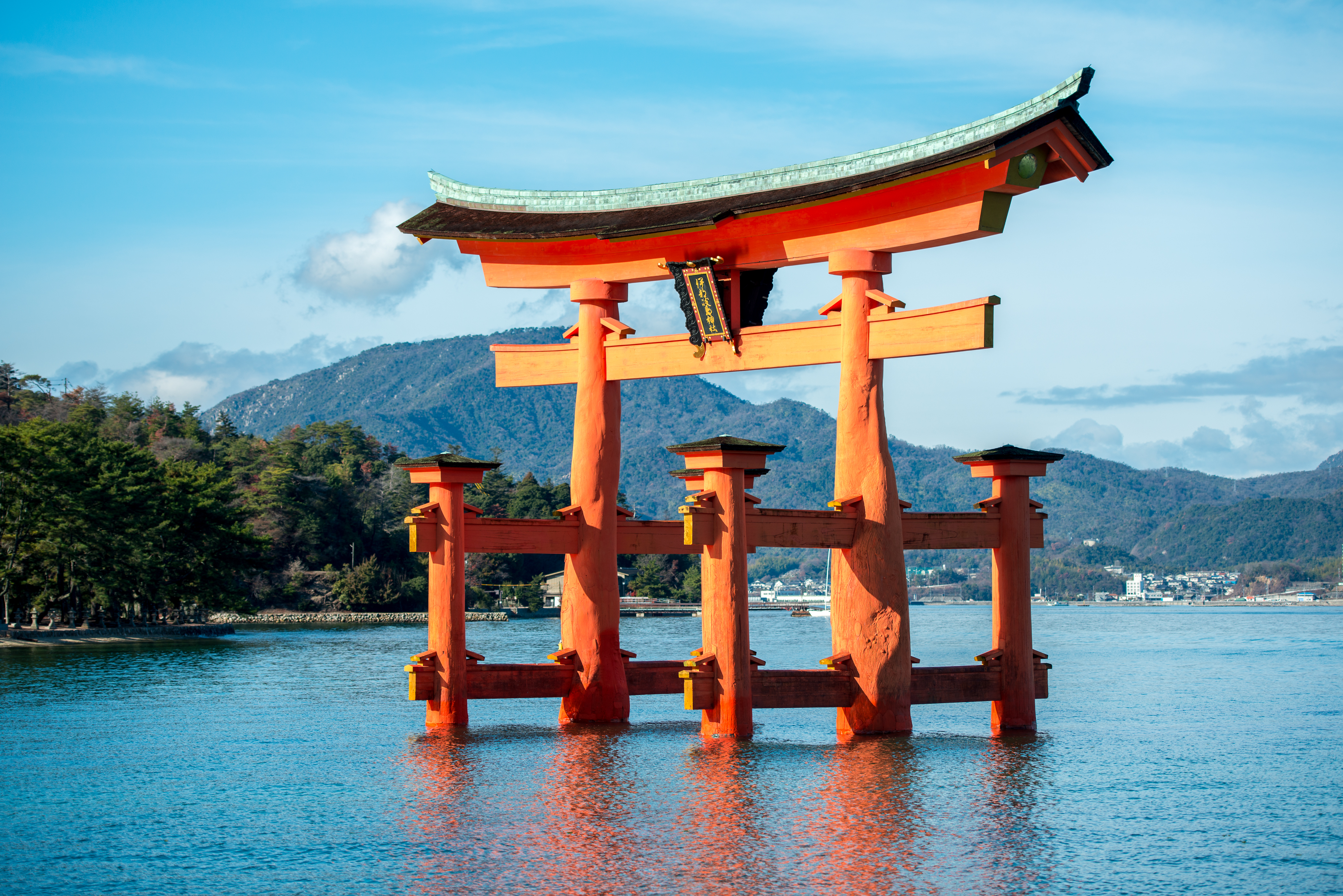|
Emperor Kōkō
was the 58th emperor of Japan,Imperial Household Agency (''Kunaichō'') 光孝天皇 (58)/ref> according to the traditional order of succession. Kōkō reigned from 884 to 887. Traditional narrative Before the emperor's ascension to the Chrysanthemum Throne, his name ('' imina'') was or ''Komatsu-tei''. He would later be identified sometimes as "the Emperor of Komatsu". This resulted in the later Emperor Go-Komatsu adopting this name (''go-'' meaning "later", so "Later Emperor Komatsu" or "Emperor Komatsu II"). Tokiyasu ''Shinnō'' was the third son of Emperor Ninmyō. His mother was Fujiwara no Sawako. Kōkō had four Imperial consorts and 41 Imperial sons and daughters.Brown, p. 289. Events of Kōkō's life The first '' kampaku'' Fujiwara no Mototsune was influential in the process by which Kōkō became an emperor. At the time Emperor Yōzei was deposed, Prince Tokiaytsu was already Governor of Hitachi and Chief Minister of Ceremonies (''Jibu-kyō'', 治部卿) ... [...More Info...] [...Related Items...] OR: [Wikipedia] [Google] [Baidu] |
Emperor Of Japan
The Emperor of Japan is the monarch and the head of the Imperial Family of Japan. Under the Constitution of Japan, he is defined as the symbol of the Japanese state and the unity of the Japanese people, and his position is derived from "the will of the people with whom resides sovereign power". Imperial Household Law governs the line of imperial succession. The emperor is immune from prosecution by the Supreme Court of Japan. He is also the head of the Shinto religion. In Japanese, the emperor is called , literally "Emperor of heaven or " Heavenly Sovereign". The Japanese Shinto religion holds him to be the direct descendant of the sun goddess Amaterasu. The emperor is also the head of all national Japanese orders, decorations, medals, and awards. In English, the use of the term for the emperor was once common but is now considered obsolete. The Imperial House of Japan, known by their name the Yamato Dynasty, is amongst the oldest in the world, with its historical ori ... [...More Info...] [...Related Items...] OR: [Wikipedia] [Google] [Baidu] |
Gangyō
, also known as Genkei, was a after ''Jōgan'' and before ''Ninna.'' This period spanned the years from April 877 through February 885. The reigning emperor was . Change of era * January 18, 877 : The new era name was created to mark an event or series of events. The previous era ended and the new one commenced in ''Jōgan'' 19, on the 16th day of the 4th month of 877. Events of the ''Gangyō'' era * January 20, 877 (''Gangyō 1, 3rd day of the 1st month''): Yōzei was formally enthroned at age 8; and the beginning of a new ''nengō'' was proclaimed. However, the new residence being constructed for the emperor had not been completed; and initially, he had to live elsewhere in the palace compound.Titsinghp. 122./ref> * 877 (''Gangyō 1, 2nd month''): Ambassadors from Korea arrived in Izumo Province; but they were turned back. * 877 (''Gangyō 1, 6th month''): There was a great drought; and sacrifices were made at the temples of Hachiman, Kamo and other temples in Ise Province. ... [...More Info...] [...Related Items...] OR: [Wikipedia] [Google] [Baidu] |
Meiji Period
The is an era of Japanese history that extended from October 23, 1868 to July 30, 1912. The Meiji era was the first half of the Empire of Japan, when the Japanese people moved from being an isolated feudal society at risk of colonization by Western powers to the new paradigm of a modern, industrialized nation state and emergent great power, influenced by Western scientific, technological, philosophical, political, legal, and aesthetic ideas. As a result of such wholesale adoption of radically different ideas, the changes to Japan were profound, and affected its social structure, internal politics, economy, military, and foreign relations. The period corresponded to the reign of Emperor Meiji. It was preceded by the Keiō era and was succeeded by the Taishō era, upon the accession of Emperor Taishō. The rapid modernization during the Meiji era was not without its opponents, as the rapid changes to society caused many disaffected traditionalists from the former samu ... [...More Info...] [...Related Items...] OR: [Wikipedia] [Google] [Baidu] |
Kugyō
is the collective term for the very few most powerful men attached to the court of the Emperor of Japan in pre- Meiji eras. The term generally referred to the and court officials and denoted a court rank between First Rank and Third Rank under the '' Ritsuryō'' system, as opposed to the lower court nobility, thus being the collective term for the upper court nobility. However, later on some holders of the Fourth Rank were also included. In 1869, following the Meiji Restoration, the court nobility and daimyo were merged into a new peerage, the '' kazoku''. Overview The ''kugyō'' generally refers to two groups of court officials: * the ''Kō'' (公), comprising the Chancellor of the Realm, the Minister of the Left, and the Minister of the Right; and * the ''Kei'' (卿), comprising the Major Counsellor, the Middle Counsellor, and the Associate Counselors, who held the court rank of Third Rank or higher. History The ''kugyō'' originated from the Three Lords an ... [...More Info...] [...Related Items...] OR: [Wikipedia] [Google] [Baidu] |
Mausoleum
A mausoleum is an external free-standing building constructed as a monument enclosing the interment space or burial chamber of a deceased person or people. A mausoleum without the person's remains is called a cenotaph. A mausoleum may be considered a type of tomb, or the tomb may be considered to be within the mausoleum. Overview The word ''mausoleum'' (from Greek μαυσωλείον) derives from the Mausoleum at Halicarnassus (near modern-day Bodrum in Turkey), the grave of King Mausolus, the Persian satrap of Caria, whose large tomb was one of the Seven Wonders of the Ancient World. Historically, mausolea were, and still may be, large and impressive constructions for a deceased leader or other person of importance. However, smaller mausolea soon became popular with the gentry and nobility in many countries. In the Roman Empire, these were often in necropoles or along roadsides: the via Appia Antica retains the ruins of many private mausolea for kilometres ou ... [...More Info...] [...Related Items...] OR: [Wikipedia] [Google] [Baidu] |
Shrine
A shrine ( la, scrinium "case or chest for books or papers"; Old French: ''escrin'' "box or case") is a sacred or holy space dedicated to a specific deity, ancestor, hero, martyr, saint, daemon, or similar figure of respect, wherein they are venerated or worshipped. Shrines often contain idols, relics, or other such objects associated with the figure being venerated. A shrine at which votive offerings are made is called an altar. Shrines are found in many of the world's religions, including Christianity, Islam, Hinduism, Buddhism, Chinese folk religion, Shinto, indigenous Philippine folk religions, and Asatru as well as in secular and non-religious settings such as a war memorial. Shrines can be found in various settings, such as churches, temples, cemeteries, museums, or in the home. However, portable shrines are also found in some cultures. Types of shrines Temple shrines Many shrines are located within buildings and in the temples designed specifically for wo ... [...More Info...] [...Related Items...] OR: [Wikipedia] [Google] [Baidu] |
Shinto
Shinto () is a religion from Japan. Classified as an East Asian religion by scholars of religion, its practitioners often regard it as Japan's indigenous religion and as a nature religion. Scholars sometimes call its practitioners ''Shintoists'', although adherents rarely use that term themselves. There is no central authority in control of Shinto, with much diversity of belief and practice evident among practitioners. A polytheistic and animistic religion, Shinto revolves around supernatural entities called the . The are believed to inhabit all things, including forces of nature and prominent landscape locations. The are worshiped at household shrines, family shrines, and ''jinja'' public shrines. The latter are staffed by priests, known as , who oversee offerings of food and drink to the specific enshrined at that location. This is done to cultivate harmony between humans and and to solicit the latter's blessing. Other common rituals include the dances, rites of pa ... [...More Info...] [...Related Items...] OR: [Wikipedia] [Google] [Baidu] |
Memorial
A memorial is an object or place which serves as a focus for the memory or the commemoration of something, usually an influential, deceased person or a historical, tragic event. Popular forms of memorials include landmark objects or works of art such as sculptures, statues or fountains and parks. Larger memorials may be known as monuments. Types The most common type of memorial is the gravestone or the memorial plaque. Also common are war memorials commemorating those who have died in wars. Memorials in the form of a cross are called intending crosses. Online memorials are often created on websites and social media to allow digital access as an alternative to physical memorials which may not be feasible or easily accessible. When somebody has died, the family may request that a memorial gift (usually money) be given to a designated charity, or that a tree be planted in memory of the person. Those temporary or makeshift memorials are also called grassroots memoria ... [...More Info...] [...Related Items...] OR: [Wikipedia] [Google] [Baidu] |
Grave (burial)
A grave is a location where a dead body (typically that of a human, although sometimes that of an animal) is buried or interred after a funeral. Graves are usually located in special areas set aside for the purpose of burial, such as graveyards or cemeteries. Certain details of a grave, such as the state of the body found within it and any objects found with the body, may provide information for archaeologists about how the body may have lived before its death, including the time period in which it lived and the culture that it had been a part of. In some religions, it is believed that the body must be burned or cremated for the soul to survive; in others, the complete decomposition of the body is considered to be important for the rest of the soul (see bereavement). Description The formal use of a grave involves several steps with associated terminology. ;Grave cut The excavation that forms the grave.Ghamidi (2001)Customs and Behavioral Laws Excavations vary from a sha ... [...More Info...] [...Related Items...] OR: [Wikipedia] [Google] [Baidu] |
Ninna
was a after '' Gangyō'' and before '' Kanpyō.'' This period spanned the years from February 885 through April 889. The reigning emperors were and . Change of era * January 20, 885 : The new era name was created to mark an event or series of events. The previous era ended and the new one commenced in ''Gangyō'' 9, on the 21st day of the 2nd month of 885. Events of the ''Ninna'' era * January 11, 887 (''Ninna 2, 14th day of the 12th month''): Kōkō traveled to Seri-gawa to hunt with falcons. He very much enjoyed this kind of hunting, and he often took time for this kind of activity. * September 17, 887 (''Ninna 3, 26th day of the 8th month''): Kōkō died at the age of 57. Kōkō's third son received the succession (''senso''). Shortly thereafter, Emperor Uda formally acceded to the throne (''sokui'').Brown, p. 289; Varley, p. 44; a distinct act of ''senso'' is unrecognized prior to Emperor Tenji; and all sovereigns except Jitō, Yōzei, Go-Toba, and Fushimi have ''senso ... [...More Info...] [...Related Items...] OR: [Wikipedia] [Google] [Baidu] |
Emperor Go-Murakami
(1328 – March 29, 1368) was the 97th emperor of Japan, according to the traditional order of succession, and a member of the Southern Court during the Nanboku-chō period of rival courts. He reigned from September 18, 1339, until March 29, 1368 ('' Shōhei 23, 11th day of the 3rd month''). His personal name was . He reigned from Sumiyoshi, Ōsaka, Yoshino, Nara, and other temporary locations. This 14th-century sovereign was named after the 10th-century Emperor Murakami and ''go-'' (後), translates as "later"; and thus, he is sometimes called the "Later Emperor Murakami". The Japanese word ''go'' has also been translated to mean the "second one"; and in some older sources, this emperor may be identified as "Murakami, the second", or as "Murakami II". Events of Go-Murakami's life "Prince Norinaga" was Go-Daigo's son from his "favorite consort of his later years". This was Lady Renshi. He lived during the turbulent years of conflict between rival claimants to the Chrysan ... [...More Info...] [...Related Items...] OR: [Wikipedia] [Google] [Baidu] |
Emperor Fushimi
was the 92nd emperor of Japan, according to the traditional order of succession. His reign spanned the years from 1287 through 1298. Name Before his ascension to the Chrysanthemum Throne, his personal name (his ''imina'') was . Although the Roman-alphabet spelling of the name of this 13th-century emperor is the same as the personal name of the 20th century Emperor Shōwa, the kanji are different: * Emperor Fushimi, formerly Prince Hirohito (熈仁) * Emperor Shōwa, also known as Emperor Hirohito (裕仁) Genealogy He was the second son of Emperor Go-Fukakusa. They were from the Jimyōin-tō line. *Empress: Saionji (Fujiwara) Shoshi (西園寺(藤原)鏱子) later Eifukumon’In (永福門院), Saionji Sanekane‘s daughter *Consort: Tōin (Fujiwara) Sueko (洞院(藤原)季子) later Kenshinmon-in (顕親門院; 1265-1336), Tōin Saneo‘s daughter **First daughter: Imperial Princess Jushi (甝子内親王; 1287-1310)later Sakuheimon-in (朔平門院) **Thir ... [...More Info...] [...Related Items...] OR: [Wikipedia] [Google] [Baidu] |

.jpg)
.jpeg/1200px-Taj_Mahal_(Edited).jpeg)



